I’m sure this happens to everyone. You are sitting alone, thinking thoughts or you are still in bed and your mind wanders and your mind says, “Hey! You know what you need? You need a life-sized bust of your head! That’s what you need. I will now harass you with this notion until you make it a reality, m’kay?”
For movies and special effects, this is typically done by making a full-sized cast of someone’s head, then making a mold, and then casting a bust in whatever material the final product will be made of. You can watch an example of that process here.
But, I don’t have access to a special effects team or a budget so I wanted to do it with what I had. One area that has advanced quite a lot is making 3-d scans of things which can then be translated into 3-d models. In fact, the Pro line of iPhones have LIDAR (Light Detection and Ranging) built into their cameras which allows them to do a very accurate scan of an object and export that object as a 3-d model.
I don’t have a recent iPhone Pro, so I used an app called EM3D which did work on one of my iPads.
This project started with my ever-patient wife scanning my head as I sat on a stool, slowly walking around my noggin as the iPad looked at and inferred geometry. This took several tries because you have to move slowly and smoothly so the application can get an accurate reading to generate a model. Now, to be clear, the accuracy of this model is what I’d call pretty good. The resolution is okay, but not great. A great mold/cast will capture wrinkles and even pores. This digital scan doesn’t do that, but it was good enough. Here is what it looks like as just a simple shaded render in Blender:
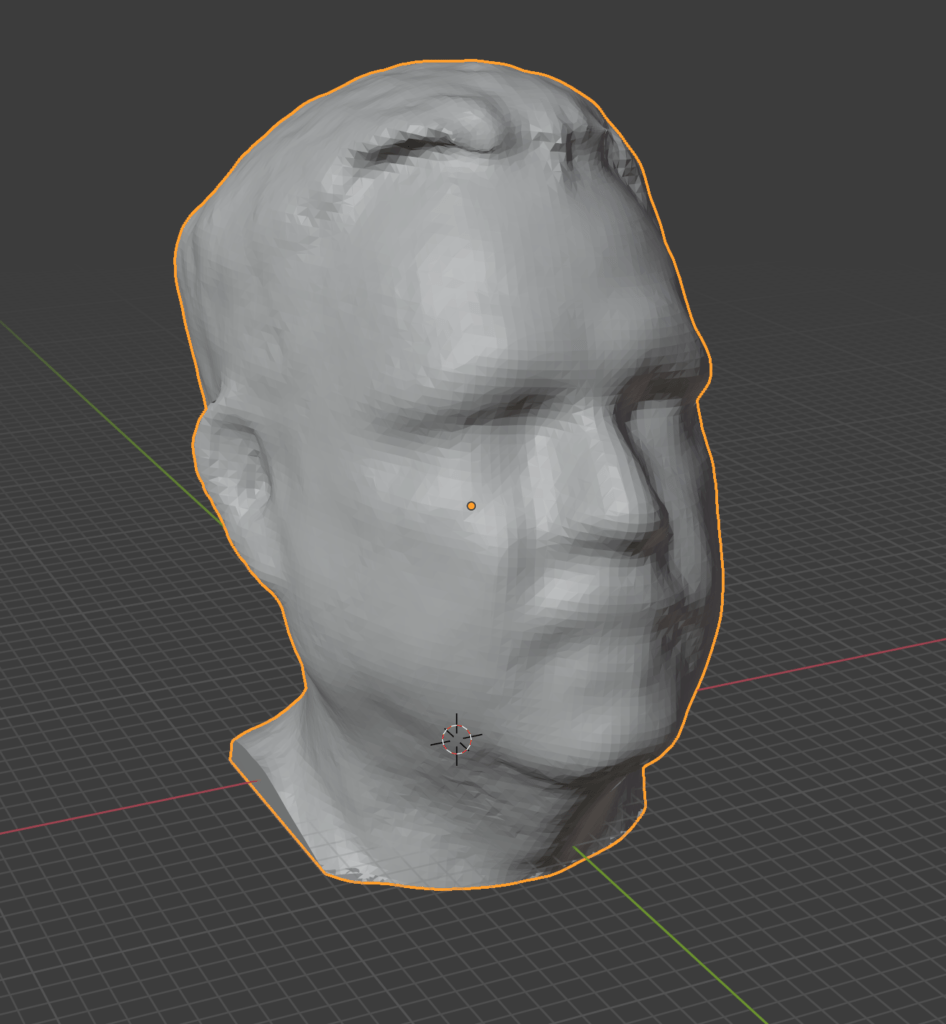
So, as you can see, it’s me, but as you can see from the facets that make up the scan, it’s not getting the fine details.
After I had that, I took it into Blender, and because my big, bucket of a head is large, it’s bigger than will fit in my 3d printer. So, Blender was used to slice the head model into six pieces of a more manageable size. That having been said, I spent most of a week printing the size pieces as each run was 10-14 hours and that was *after* I moved to a 0.6mm nozzle (50% larger than my usual 0.40mm nozzle) and am printing at basically draft quality. It also took roughly 1.5 spools of PLA plastic, so about $30 in materials just to print the pieces.
After I had the pieces printed, it was time to glue them all together.
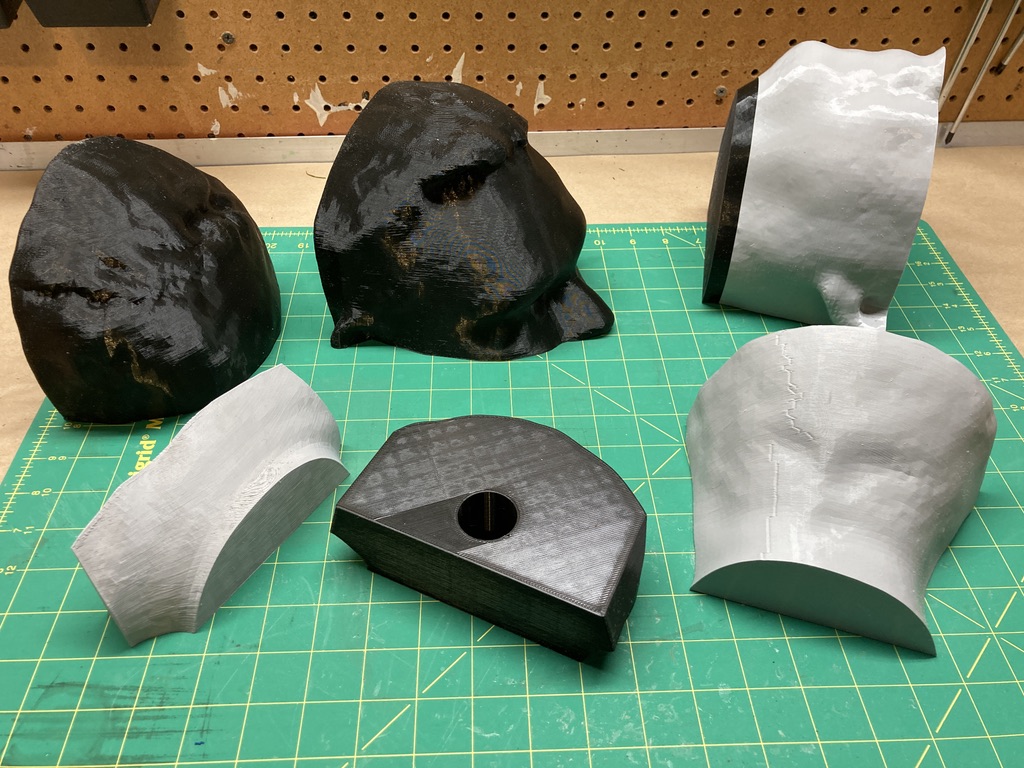
I used a two-part epoxy to assemble each layer, at two pieces each, front and back:
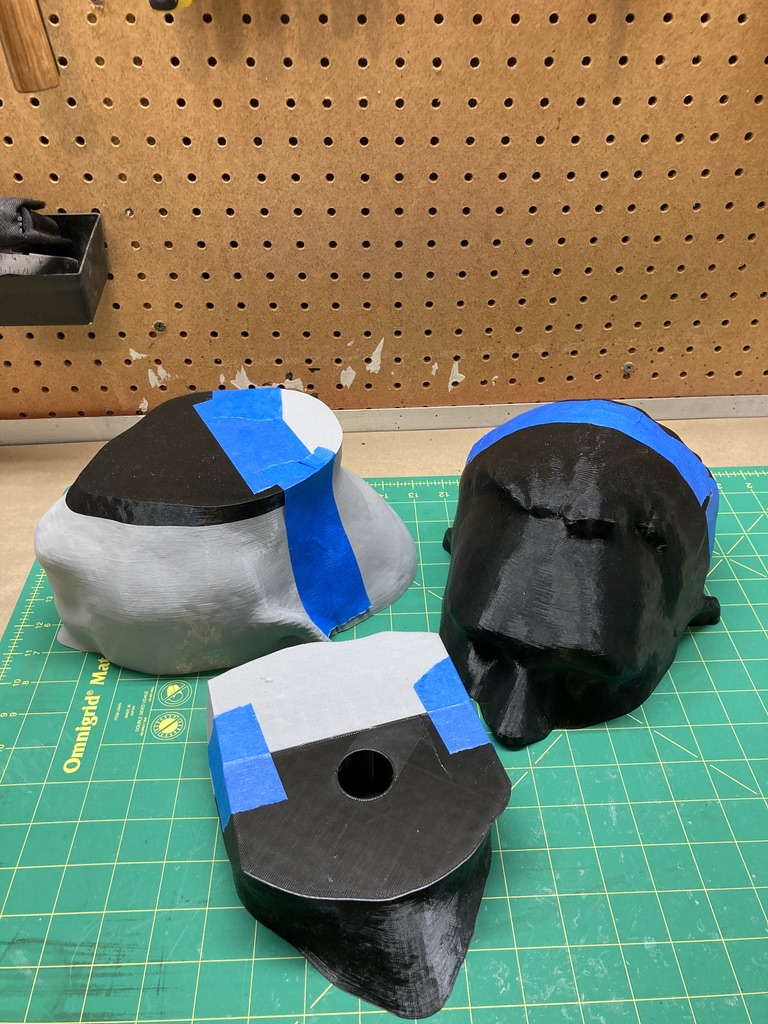
The blue painter’s tape was used to maintain alignment while the epoxy cured. Finally, the three layers were assembled, taped, and rubber-banded to hold my head together.
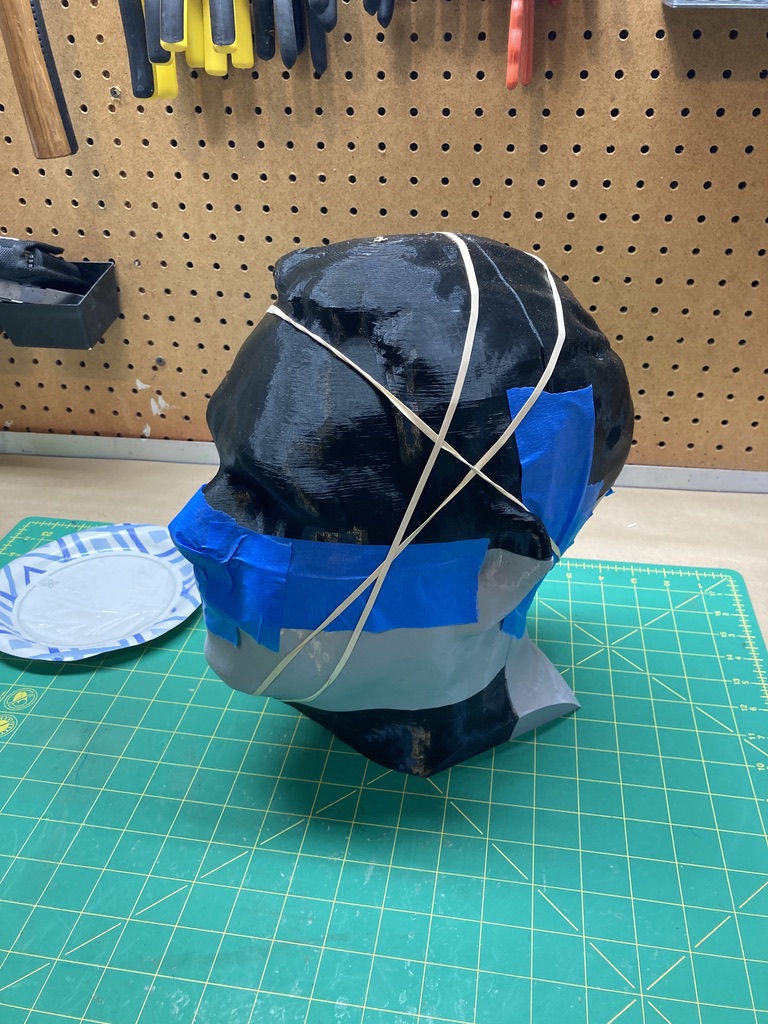
This was my noggin after all the pieces were assembled but before any paint or other steps.
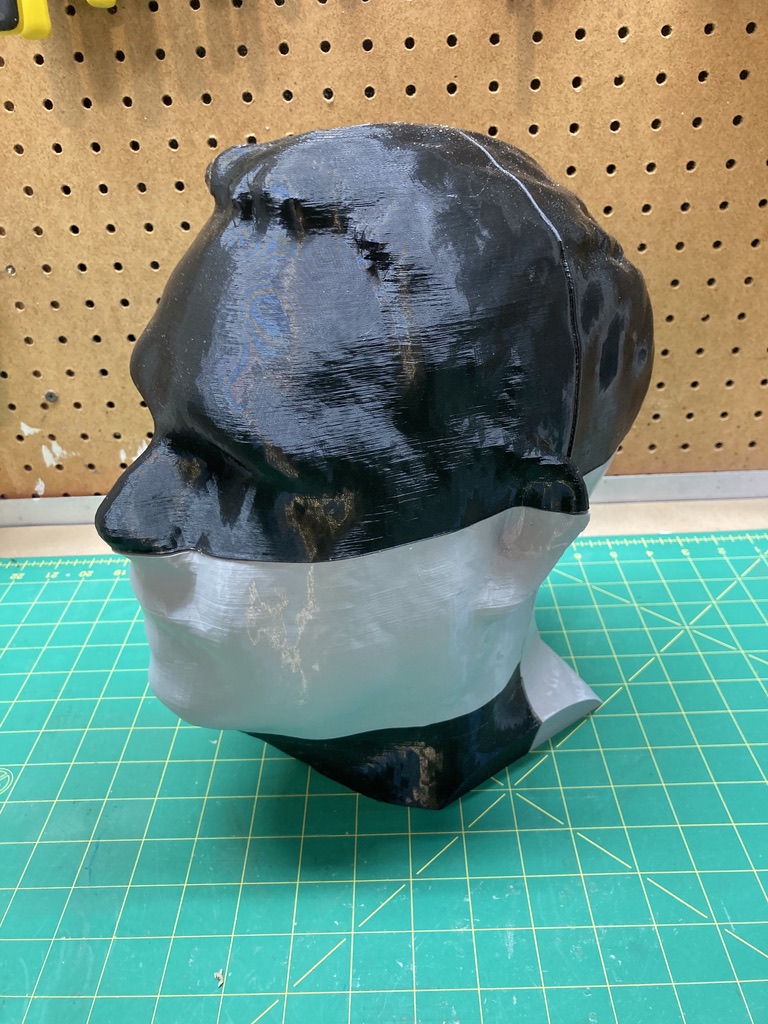
The next step is tedious but necessary. As you can see up and around the back of my ears, there were visible seams where the pieces met. That’s not in the model or the cut-up version of the model, but it’s an artifact of the printing process. You could avoid those artifacts with a sufficiently large 3-d printer.
The fix is to use some kind of material to fill the seams. I used a fast-drying epoxy glaze to fill the seams then sand them. Additional sanding was done as needed around the seams and in other places. I wasn’t shooting for eliminating the layer lines completely, but at least making them less obvious.
Finally, it was time for paint. Lots of paint. I was shooting for something vaguely stone-like, so lots of shades of gray, but with some blue and other colors mixed in for variation. Then some dry brush for highlights and finally a seal coat of clear varnish to protect the final product.
Finally, I had put a hole in the bottom so I could mount it on a wooden base (and remove it if desired), so I made that and we were nearly done!
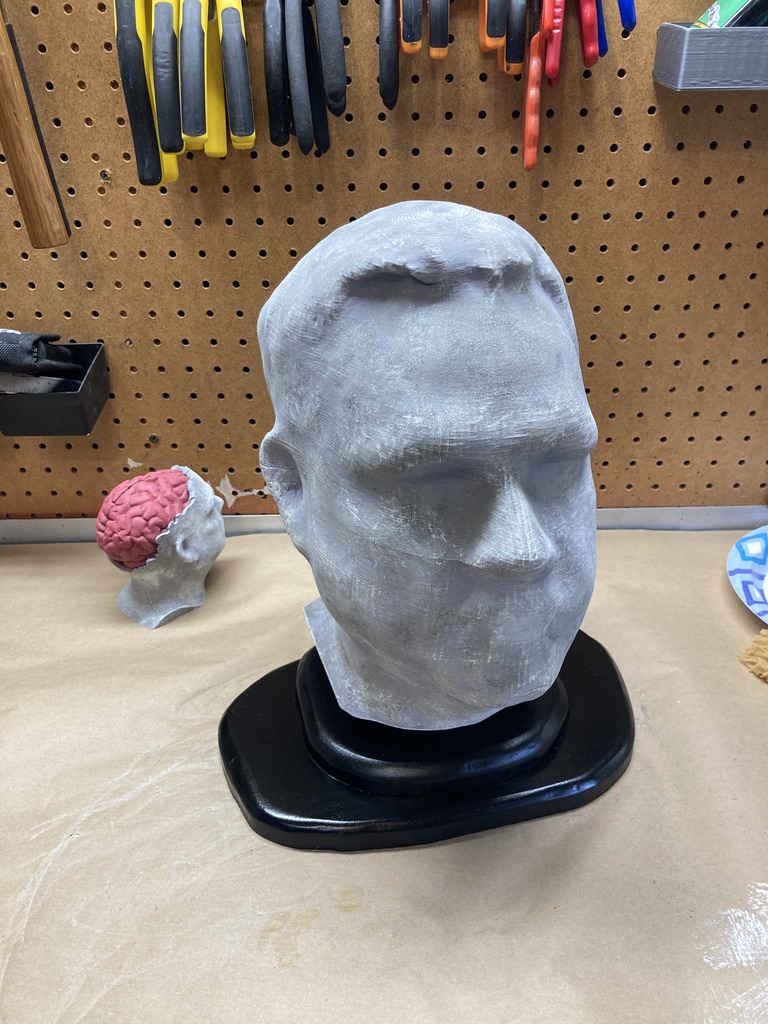
One benefit of having your own model of your own head is that you can remix that design and go nuts. For example, you can remove part of your own head and replace the innards with a model of a brain. Because it’s cool and a little bit gross. The next iteration will have a brain inside a skull which is inside the head, but that’s for down the road a bit.
Here my bust sits, on a shelf, staring down at me. It’s not great resolution, but it’s clearly my head and it looks vaguely stone-like, so I’m happy with the results!
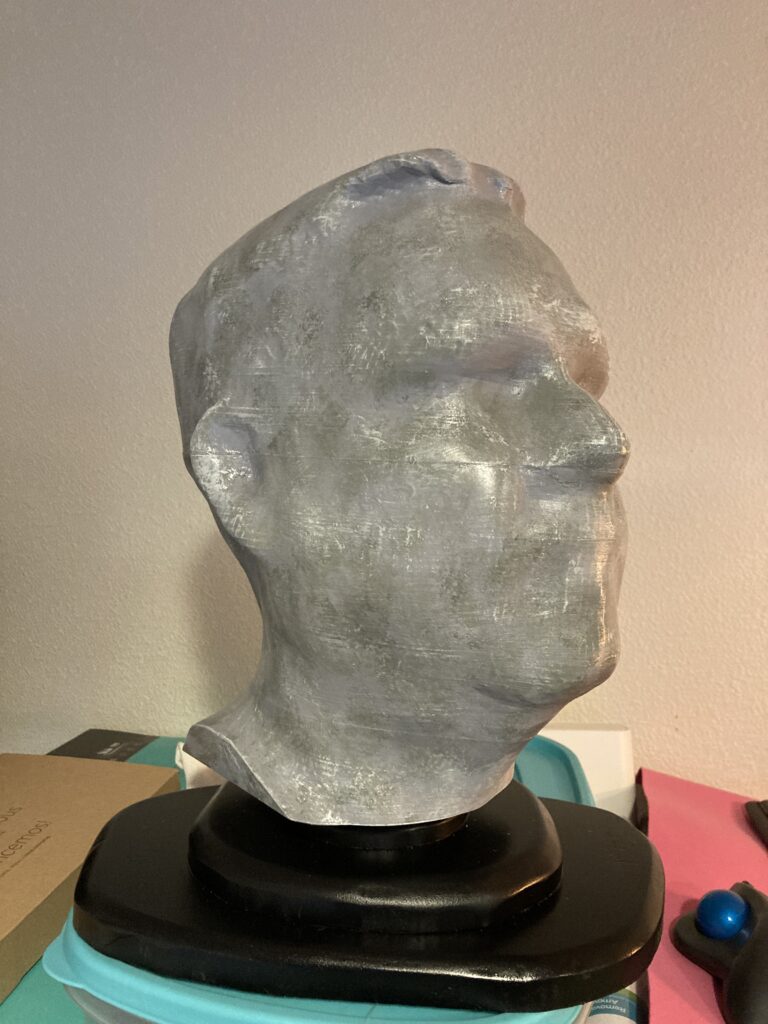
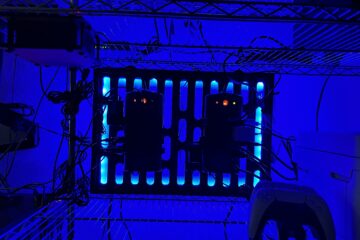
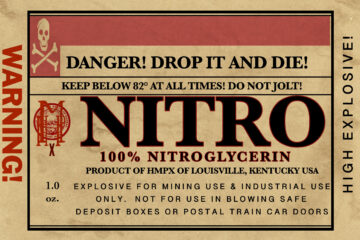

0 Comments